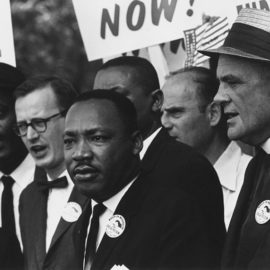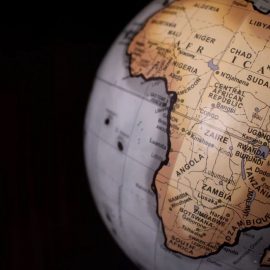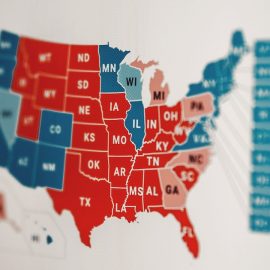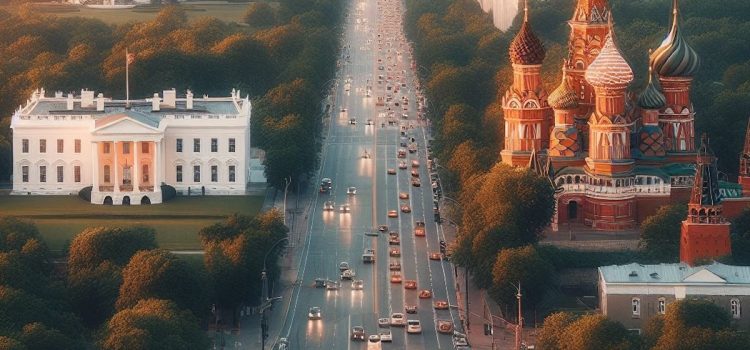
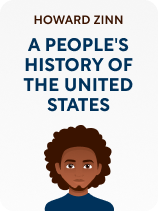
This article is an excerpt from the Shortform book guide to "A People's History of the United States" by Howard Zinn. Shortform has the world's best summaries and analyses of books you should be reading.
Like this article? Sign up for a free trial here.
What’s the history of the Cold War from “the people’s” perspective? What was it really about?
Howard Zinn portrays the Cold War as a strategic endeavor by American elites to curb communism’s influence while safeguarding financial interests. The CIA’s covert operations and the Vietnam War showcase the lengths to which the US went to maintain dominance and thwart perceived threats.
Read more to get Zinn’s take on this prolonged ideological conflict that dominated much of the 20th century.
The Cold War (1947-1991)
Following the end of World War II, Zinn explains, American elites embarked on a decades-long campaign to prevent the spread of communism and protect their—and Western European elites’—financial interests. This strategy would limit the political and economic strength of the Soviet Union while also protecting the US-dominated post-war economy. In Zinn’s history of the Cold War, he notes several important theaters, including the CIA’s covert operations and the Vietnam War.
(Shortform note: Though the Cold War is often discussed as a struggle between communism and capitalism, the US government was willing to cooperate with communist nations so long as they were aligned against the USSR. Specifically, the US maintained economic and diplomatic ties with communist governments in Yugoslavia, Somalia, and China at various points during the Cold War. This suggests the conflict was less about opposing all communism and more about opposing the USSR and its allies.)
Covert Actions and the CIA
The Central Intelligence Agency, or CIA, covertly enacted America’s foreign policy throughout the Cold War. Composed of a number of business and political elites, the CIA supported, planned, and even participated in coups in countries that threatened American or European business interests—regardless of whether they were communist or pro-Soviet. For example, the CIA helped coordinate a coup of the democratically elected leader of Iran, Mohammad Mosaddegh, when he attempted to nationalize the country’s British-owned oil companies.
(Shortform note: While histories of the CIA during the Cold War tend to focus on covert actions in developing nations, some historians argue the CIA also used violence to influence the politics of America’s European allies. They point to Operation Gladio, where the CIA allegedly funded and trained paramilitary units in countries across Western Europe to organize resistance in case of a Soviet invasion of Western Europe. A 2000 Italian parliamentary report connected units funded by Gladio to several acts of far-right terrorism in Italy in the 1960s and ’70s. However, the US denies it supported or authorized any such terrorist activity.)
The Vietnam War (1963-1972)
In some instances, Zinn explains, covert actions weren’t enough to secure the goals of elites. This was the case in Vietnam, where the US tried and failed to covertly stop popular Vietnamese resistance against the French colonial government. Instead of trying to work with the initially cooperative Vietnamese revolutionary movement, the US created a capitalist dictatorship in South Vietnam and eventually went to war with North Vietnam to defend it. During the war, the US used a strategy of mass death and destruction—using chemical and incendiary weapons to destroy wildlife, bombing civilian infrastructure like dams to cause starvation, and indiscriminately killing civilians.
From the mid to late ’60s, the anti-Vietnam War movement became a popular force across the US. Black Americans in the Civil Rights Movement started the campaign, but thousands of students, young people, and eventually the middle class joined. Civilians protested and dodged the draft, while anti-war American soldiers deserted, refused to follow orders, or even killed their commanding officers in protest. Faced with mounting domestic political pressure and a determined, skilled North Vietnamese insurgency, US elites eventually had to admit defeat. They withdrew American soldiers from Vietnam, and South Vietnam collapsed shortly afterward.

———End of Preview———
Like what you just read? Read the rest of the world's best book summary and analysis of Howard Zinn's "A People's History of the United States" at Shortform.
Here's what you'll find in our full A People's History of the United States summary:
- A bottom-up view of American history focusing on the people, not the politicians
- How Indigenous people, Black Americans, women, laborers, and activists lived
- Why social movements of the 60s and 70s failed to create lasting change


